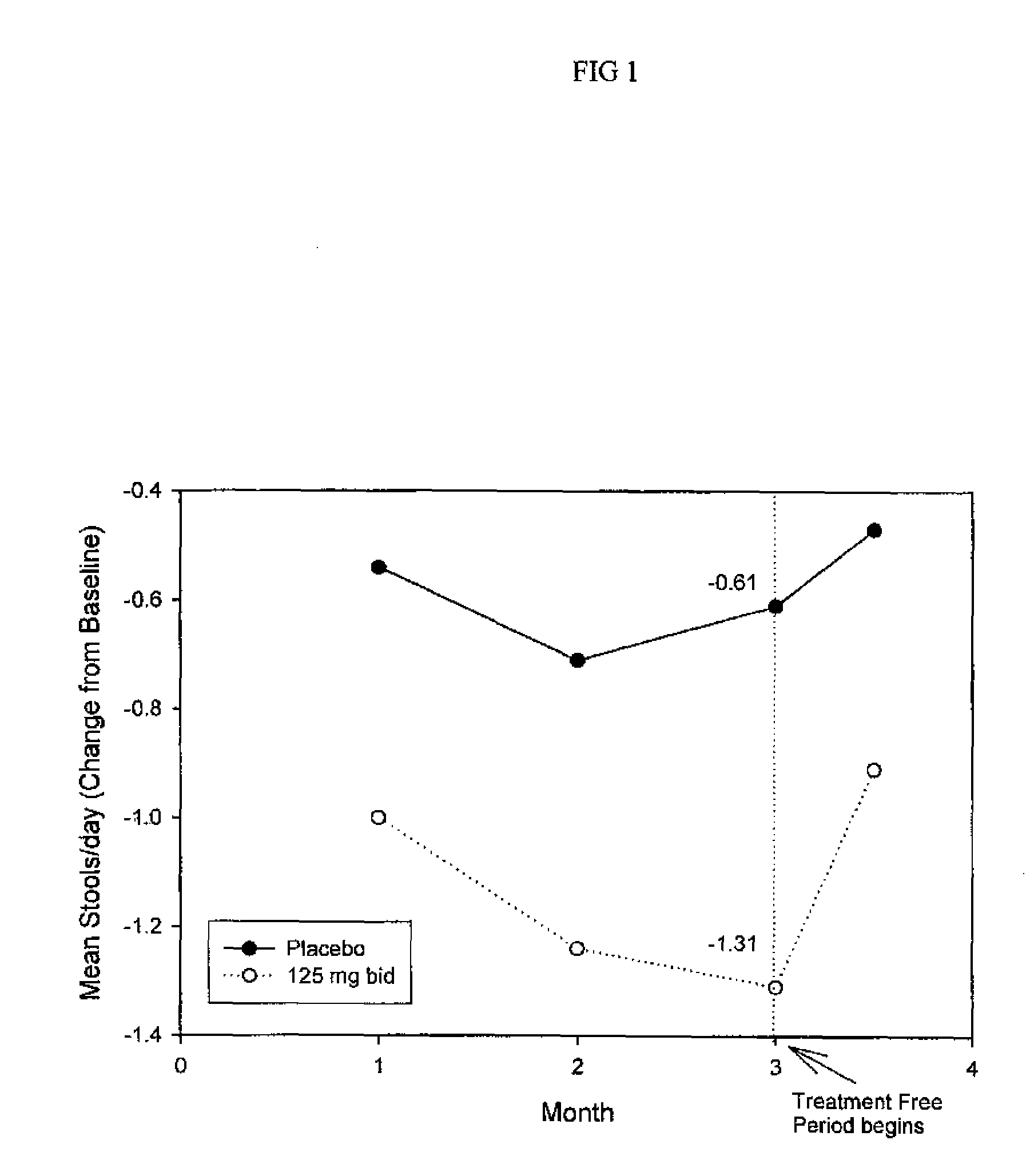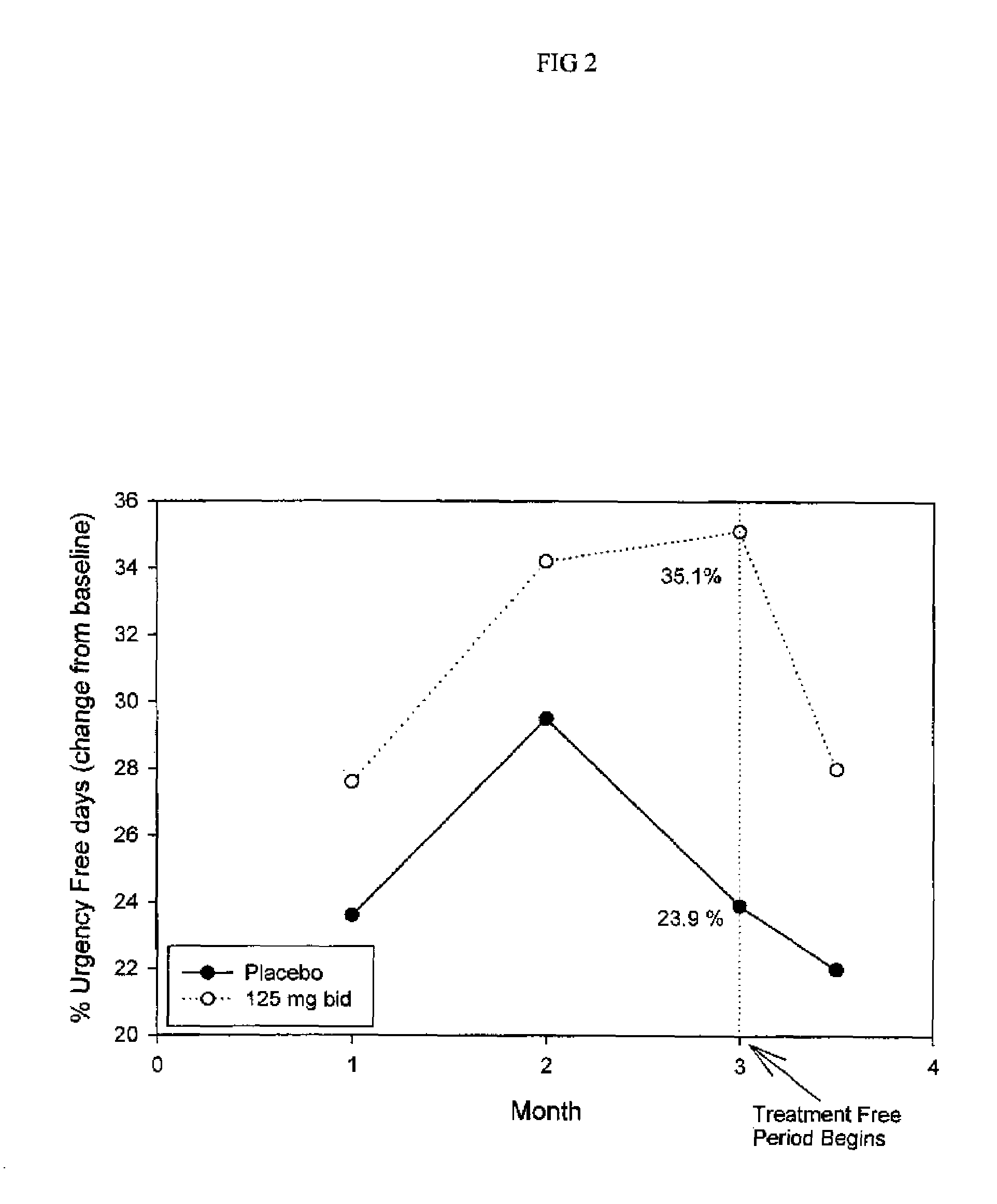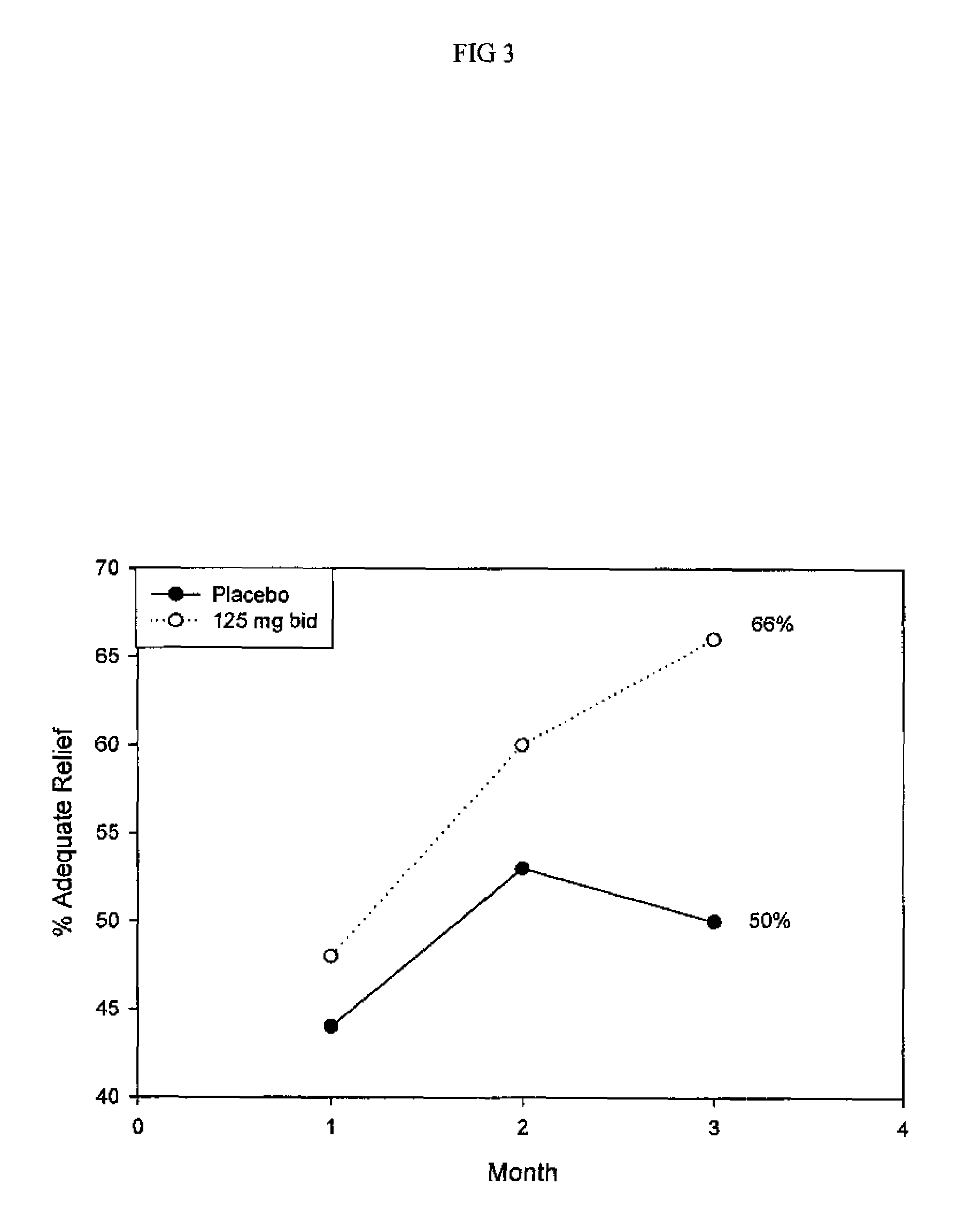Method for treatment of constipation-predominant irritable bowel syndrome
a technology for irritable bowel syndrome and constipation, which is applied in the direction of biocide, plant/algae/fungi/lichens, drug compositions, etc., can solve the problems of large annual healthcare cost, non-gastrointestinal functional disorders, and insufficient treatment of ibs by anti-diarrheal drugs
- Summary
- Abstract
- Description
- Claims
- Application Information
AI Technical Summary
Benefits of technology
Problems solved by technology
Method used
Image
Examples
example 1
Preparation of Pharmaceutical Formulations
[0091]Described below are illustrative methods for the manufacture and packaging for different preferred pharmaceutical formulations of the proanthocyanidin polymer composition from C. lechleri according to the present invention.
[0092]1A. Encapsulated Enteric Coated Beads
[0093]Detailed descriptions of the batch formula and methods used to prepare the encapsulated enteric coated proanthocyanidin polymer composition bead formulation based on sugar spheres are provided below. Each hard-shell gelatin capsule contained 250 mg proanthocyanidin polymer composition enteric coated beads. Capsules were packaged in HDPE bottles containing sixteen (16) 250 mg caps each. The formulation for enteric coated proanthocyanidin polymer composition beads contained 17.3% (w / w) of nonpareil seeds (sugar spheres 40 / 60 mesh, Paulaur, lot #60084060), 64.5% proanthocyanidin polymer composition from C. lechleri, 1.5% hydroxypropylmethylcellulose (Methocel E5 Premium, ...
example 2
Isolation of Directly Compressible Proanthocyanidin Polymer Composition
[0117]A directly compressible proanthocyanidin polymer composition (used to prepare the formulations in Examples 1E and 1F above) was isolated from the latex of the Croton lechleri plant as follows:
[0118]460 liters of Croton lechleri latex was mixed with 940 liters purified water for ten minutes and then allowed to stand overnight (12 hours) at 4° C. The red supernatant was pumped into a holding tank and the residue discarded. The supernatant was then extracted with 200 liters n-butanol by mixing for ten minutes and then allowing the phases to separate. The n-butanol phase was discarded, and the aqueous phase was extracted two more times with 200 liters n-butanol each time. After extraction, the aqueous phase was concentrated by ultrafiltration using a 1 kD cut-off membrane (a low protein binding cellulose membrane), and then the retentate was dried in a tray dryer at approximately 37° C. (±2° C.).
[0119]For purif...
example 3
Components, Composition, and Manufacturing of a Drug Product
[0121]3A. Drug Product
[0122]The drug product, crofelemer, consists of an enteric-coated 125 mg tablet(s) over-encapsulated in a Size 00, opaque Swedish orange gelatin capsule and backfilled with microcrystalline cellulose. Each capsule contains 1, 2, or 4 enteric-coated tablets. The tablet core consists of 99.93% crofelemer and 0.07% magnesium stearate and is coated with a methacrylic acid copolymer.
[0123]3B. Components of Drug Product
[0124]Crofelemer is supplied by Napo Pharmaceuticals, Inc., and is manufactured under current Good Manufacturing Practices (cGMP). Magnesium stearate is manufactured by Mallinckrodt (or equivalent) and meets the specifications for magnesium stearate as described in 27 USP / NF. The magnesium stearate is certified by the manufacturer to be derived from vegetable sources. Microcrystalline cellulose is manufactured by FMC (or equivalent) and meets the specifications for microcrystalline cellulose a...
PUM
 Login to View More
Login to View More Abstract
Description
Claims
Application Information
 Login to View More
Login to View More - R&D
- Intellectual Property
- Life Sciences
- Materials
- Tech Scout
- Unparalleled Data Quality
- Higher Quality Content
- 60% Fewer Hallucinations
Browse by: Latest US Patents, China's latest patents, Technical Efficacy Thesaurus, Application Domain, Technology Topic, Popular Technical Reports.
© 2025 PatSnap. All rights reserved.Legal|Privacy policy|Modern Slavery Act Transparency Statement|Sitemap|About US| Contact US: help@patsnap.com



